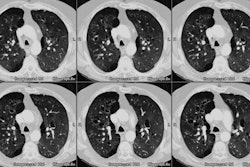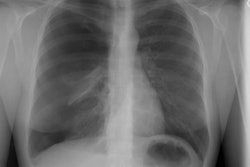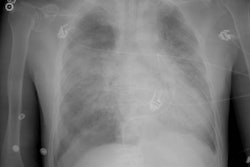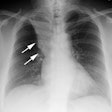Long-term survival after thoracoscopic lung volume reduction: a multiinstitutional review.
Naunheim KS, Kaiser LR, Bavaria JE, Hazelrigg SR, Magee MJ, Landreneau RJ, Keenan RJ, Osterloh JF, Boley TM, Keller CA
BACKGROUND: It has been suggested that bilateral thoracoscopic lung volume reduction (BTLVR) yields significantly better long-term survival than unilateral thoracoscopic lung volume reduction (UTLVR). METHODS: All perioperative data were collected at the time of the procedure. Follow-up data were obtained during office visits or by telephone. RESULTS: A total of 673 patients underwent thoracoscopic LVR: 343 had either simultaneous or staged BTLVR and 330, UTLVR. As of July 1998, follow-up was available on 667 (99%) of the 673 patients with a mean follow-up of 24.3 months. The patients in the BTLVR group were significantly younger (62.6+/-8.0 years versus 65.4+/-8.1 years; p < 0.0001), had a higher preoperative arterial oxygen tension (69.7+/-12 mm Hg versus 65.3+/-11 mm Hg; p < 0.0001), and had a superior preoperative 6-minute walk performance (279.9+/-93.6 m [933+/-312 feet] versus 244.5+/-101.4 m [815+/-338 feet] p < 0.0001). There was no difference in the operative mortality rate between the two groups (UTLVR, 5.1%, and BTLVR, 7%). Actuarial survival rates for the UTLVR group at 1 year, 2 years, and 3 years were 86%, 75%, and 69%, respectively versus 90%, 81%, and 74%, respectively, for the BTLVR group (p = not significant). CONCLUSIONS: Contrary to previous reports, survival after BTLVR was not superior to that after UTLVR even though the former group appeared to have a lower risk preoperatively because of younger age, higher arterial oxygen tension, more advantageous anatomy, and better functional status. Despite thoracoscopic LVR, the actuarial mortality rate approached 30% at 3 years, and this calls into question whether this procedure offers any survival advantage to patients with end-stage emphysema.
Publication Types:
Multicenter study






